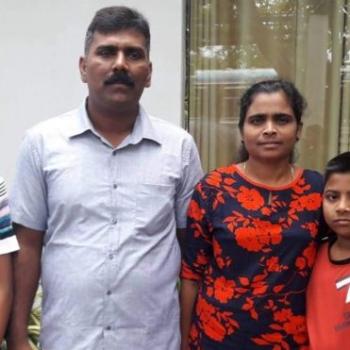This is one of the more unusual feasts on the Church calendar. It is one of those rare feasts, in fact, in which we honor not a person or an event or a theological idea, but a building.
The building has a long name: its official title is the Archbasilica of the Most Holy Savior and Saints John the Baptist and the Evangelist at the Lateran. But most of us know it simply as St. John Lateran, or the Lateran Basilica.
It traces its history back to the fourth century, and gets its name not from a saint, but from a Roman family, the Laterani family, which owned the palace where the church was built.
As the oldest church of its kind, the Lateran Basilica is the “mother church” of Rome—and the church of the bishop of Rome, the pope.
If you ever get to Rome to see the Lateran basilica, you see a beautiful work of architecture and a powerful and inspiring piece of history.
But you also see something else.
It represents, in a sense, all the churches of the Catholic world: those places where the holy sacrifice of the Mass is celebrated again and again, in spaces large and small; the churches where children are baptized; where couples are married; where sins are forgiven and hope is renewed.
Here is the universal church—wherever God makes himself present in his Word, in the Eucharist, in the people.
It may be a humble brick chapel in Kentucky.
Or a cinderblock multi-purpose building in Africa.
Or a bamboo shack in the rice fields of Vietnam.
It is who we are and what we believe—the Church wherever it is found throughout history.
It is monks worshipping in a rustic stone chapel on a windswept hill in forgotten corner of Europe.
It is Jesuit missionaries praying in a wooden building in the wilderness of upstate New York, giving their lives to convert that corner of the world to Christ.
It is a priest celebrating Mass this very Sunday on a folding table under a tent in Iraq, surrounded by refugees who have no place to go.
The Lateran represents all that and more. It stands today as an enduring symbol of the universal church.
By happy coincidence, we mark the feast of the dedication of the Lateran Basilica during an important milestone for this parish church, too.
Seventy-five years ago last Wednesday, November 5, 1939, Catholics from Queens gathered for Mass for the first time here in this church at Our Lady Queen of Martyrs. After a decade of worshipping in the school auditorium, the parish finally had a church.
And with that, these four walls became a part of the ongoing history of Catholic Christianity. What a blessing it has been.

A church, of course, is more than just brick and mortar. A church is its people, the “temple of God,” as Paul put it. This temple, the Body of Christ, which includes all of us, is not something static or fixed.
It is built of “living stones.”
I thought of that last week, when this parish remembered one of its own “living stones,” a woman recognizable to so many, Mary Newman. Most knew her as the little Irish woman who sold chances and raffle tickets at a table in the vestibule of the church. She was a familiar fixture here—as much a part of this church as its statues and windows. Last Monday, Mary entered eternal life. She was 87. By the grace of God, she was able to make it home to Ireland, to be buried from the church where she was baptized.
Friday, we celebrated a memorial Mass here for Mary. Fr. Passenant preached beautifully about Mary’s life and her love for this church. And we were reminded of something we easily forget: this church wouldn’t be here without people like Mary Newman—countless men and women, so many of them unknown or unheralded, but people of sacrifice and devotion and faith. People in love with Christ and devoted to the Church.
When we speak of “the Church,” we are really speaking of them.
And: we are speaking of us.
Our great challenge as members of the Church, the Body of Christ, is to carry it on, to continue to build it up.
We can never forget: our Church was founded by a carpenter. And he left us with the tools to finish what he began: lessons in love and sacrifice, fidelity and mercy.
These are the building materials of our faith. This is what the Church is made of.
And this, as a result, is the great ongoing work of our lives.
This morning, as we honor the “mother church” of the Catholic Church, we whisper a quiet prayer of thanksgiving for this church, dedicated to the mother of us all.
And we pray in gratitude, for all the “living stones,” people like Mary Newman, who helped make it possible.
If you visit Rome and see the Lateran, you’ll be seeing a remarkable piece of our history.
But you will also see a great tribute to Christ’s enduring work here on earth—a mission that spans the world and crosses the centuries.
This feast reminds us: the work is far from finished.
It is up to us to pick up the tools and carry it on.












